
Montana is one of the most breathtaking states in the country. With towering mountains, ethereal woodlands, and pristine waters, there’s no denying the beauty of the state. Today we’re going to be looking at the oldest man-made lake in Montana: Fort Peck Lake.
The Oldest Man-Made Lake in Montana
When full, Fort Peck Lake has a volume of 18,700,000 acre-feet. This makes it the fifth-largest man-made lake in the country. It crosses central Montana for 134 miles, and its 1,520-mile shoreline is twisted and dotted with inlets.
This lake is less than 20 miles from Glasgow, a town near the Missouri River. It sits in a rather rural area on the eastern side of the state. The Missouri River feeds the lake and minor tributaries such as the Fourchette Creek, Timber Creek, Musselshell River, Hell Creek, and Dry Creek.
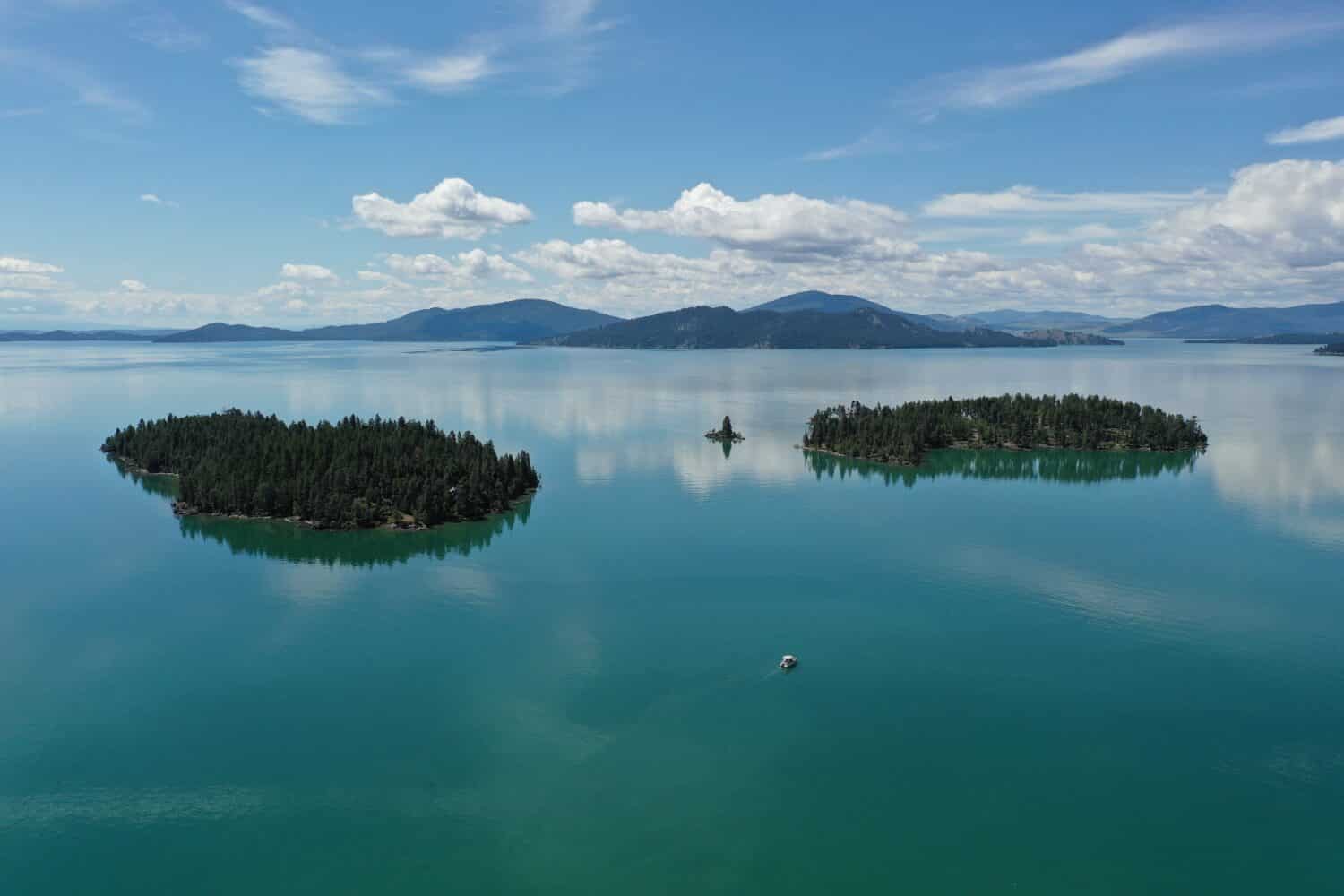
Some lakes in Montana have multiple islands.
©Francisco Blanco/Shutterstock.com
The latter extends about 30 miles southward and is the reservoir’s greatest sidearm. While a natural lake called Flathead Lake has greater capacity due to its deeper depth, the lake’s 245,000 acres make allow Fort Peck Lake to take the crown for the largest in Montana by surface area.
Even though there are numerous other roads heading to the region from various points, many of them are dirt roads. These can become impassable during rain or snow. Fort Peck Marina, located on the west side of the dam, provides direct entry to the lake.
History of Fort Peck Lake
Northeast Montana’s Fort Peck Dam is a masterpiece. President Franklin Delano Roosevelt approved the Public Works Administration Act in 1933, in the midst of the Great Depression.
The construction of the Fort Peck Dam began shortly thereafter.
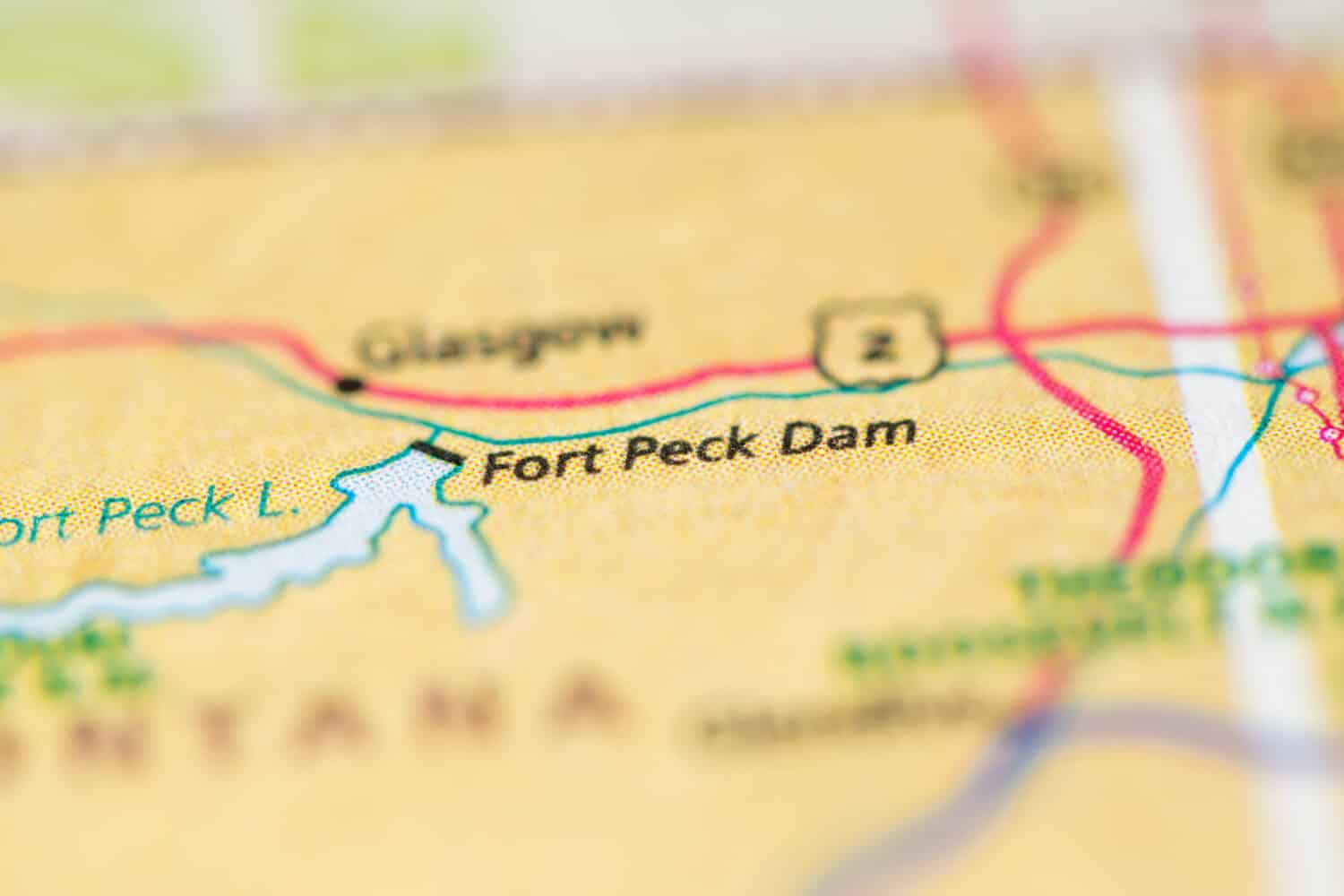
Without Fork Peck Dam, there would be no Fort Peck Lake.
©SevenMaps/Shutterstock.com
The U.S. Army Corps of Engineers constructed Fort Peck Dam between 1933 and 1940. In 1937, water, and the reservoir was initially filled to capacity in 1947. In order to make place for the lake, the federal government forcibly evicted farmers and ranchers who resided at the bottom of the valley.
Fort Peck is in fact a small town that first appeared during the time of the dam’s building and was populated by people who were working within and around the dam before developing into a small neighborhood.
The Charles M. Russell National Wildlife Refuge, which has a total area of more than a million acres in the United States, runs the wildlife refuge. The fish and wildlife service completely encircles the lake’s area. Fort Peck Lake is a favorite among locals and visitors. People see this area as a haven for outdoor relaxation despite also being known as the site of the first dam built along the Missouri River.
Visitors travel to Fort Peck Lake for its excellent fishing, opportunities for watching animals, and many other outdoor recreational activities.
Wildlife Near Fort Peck Lake
Along with beautiful sights and endless outdoor activities, Fort Peck Lake has an abundance of wildlife. The more open and rugged terrain is home to antelope and mule deer. White-tailed deer are abundant in rivers and streams, while bighorn sheep and elk herds of the highest caliber live in the Missouri River Breaks near the enormous Fort Peck Reservoir.
Ducks and geese live happily in the prosperous Prairie Pothole area. Farming regions are home to pheasants. Grasslands and prairies are native to a variety of grouse.
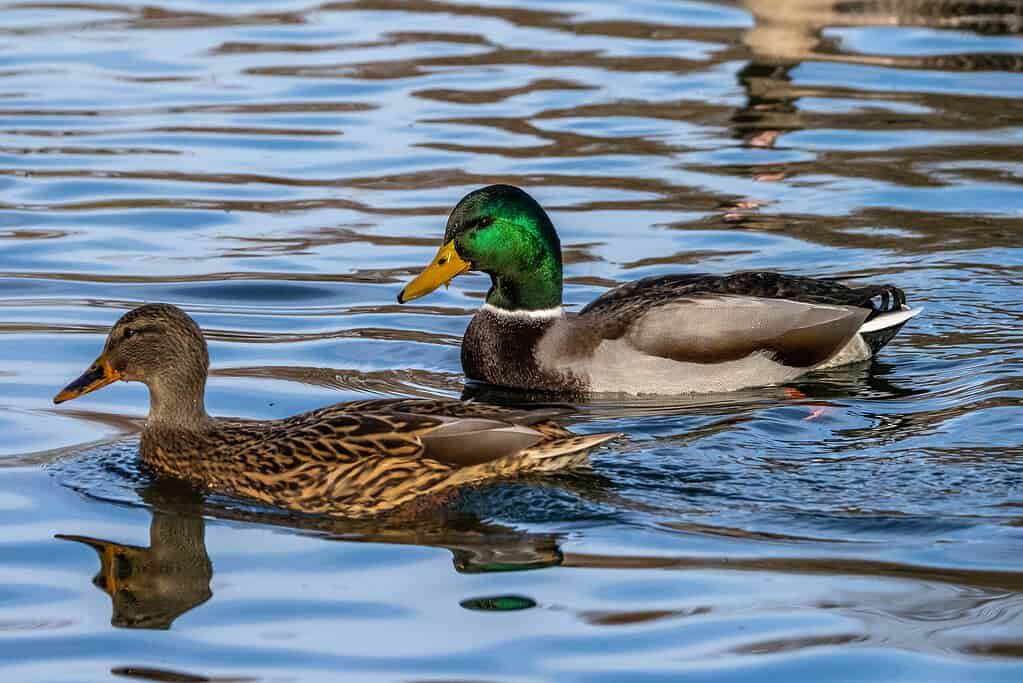
Many migratory birds spend time in Fort Peck Lake.
©iStock.com/Rudolf Ernst
Not many harmful species live in Fort Peck Lake itself. Elk, wolf packs, coyotes, and mountain lions often surround the lake. Near the lake, there are also snakes. Leeches are unfortunately hiding here and visitors sometimes find them on their bodies. Because anglers often use leeches for bait, you can often spot them in the water.
The majority of the local animals are protected. You are not able to hunt badgers, bobcats, rabbits, bears, moose, snakes, and wolves. It is also against the law to trap or use trail cameras in the area.
You can hunt deer, bighorn sheep, elk, mountain lions, and migratory birds as long as it’s hunting season and you have the proper licenses. Fort Peck Lake is encircled by the Charles M. Russell National Wildlife Refuge. Hunters in this area must follow all rules and get a Montana hunting license.
Things to Do at Fort Peck Lake
Recreational activities like fishing, swimming, aquatic activities, and camping are typically the main draws for tourists to the Fort Peck Lake region. Despite this, the Fort Peck Interpretive Center and Museum is located immediately downstream of the Fort Peck Dam and features a number of exhibits on animals, dinosaur fossils, and other topics pertaining to the building of the dam and its origins.

Fort Peck Lake is a great place to cool off in the summer.
©iStock.com/master1305
Along with a playground park, Fort Peck Lake offers camping, possibilities for education about the environment, and specialist sports. The Fort Peck bison herd is located at the Downstream Campground in the nearby Leo B. Coleman Wildlife Pasture, providing everyone, especially those traveling by car, with a fantastic opportunity to see wildlife.
The famous Fort Peck Theater in the hamlet of Fort Peck is a well-liked tourist site in the summertime if you feel like experiencing some history while you’re nearby. For those who want to explore Montana a little longer but aren’t fans of camping outdoors, there are lodges and resorts in the area that can keep you cozy!
Fishing
People say that Fort Peck Reservoir has more than 50 different types of fish within its waters. Because of this, angling there is a well-liked sport. Walleye, for which the lake is famous, in addition to bigmouth buffalo, black crappie, northern pike, chinook salmon, paddlefish, brown trout, and channel catfish, are just a few of the fish species that may be found there.
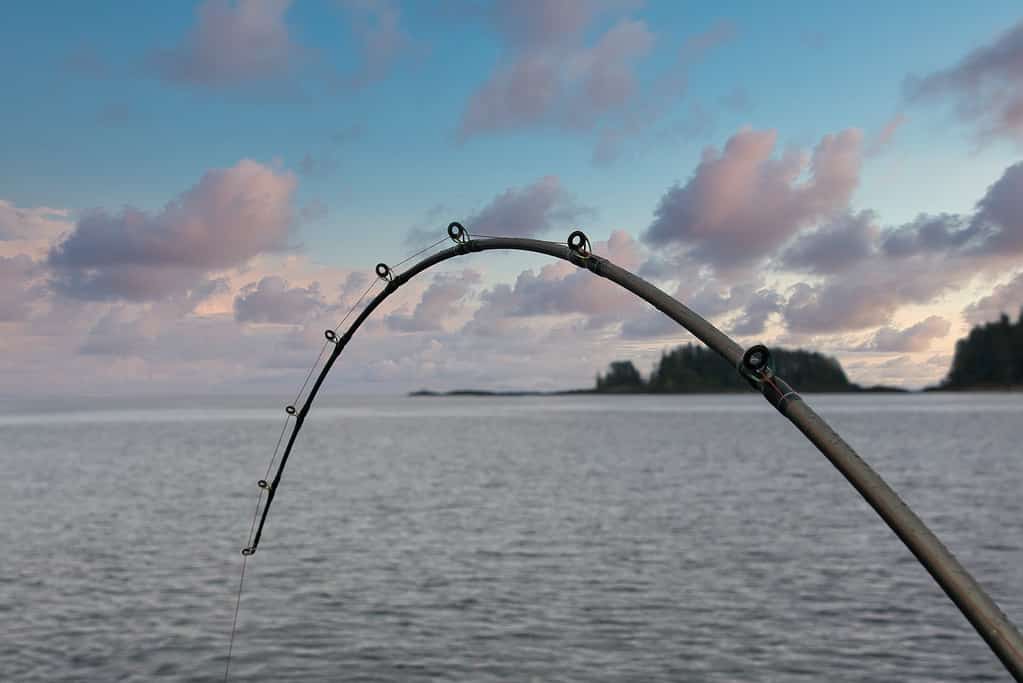
Fishing is the most popular activity at Fort Peck Lake.
©Darryl Brooks/Shutterstock.com
Fort Peck Lake hosts the Governor’s Cup Fishing Competition, which brings in fishermen from every corner to compete for big walleye. Because of the size of the lake and the wind, which can produce some respectable-sized waves, highly skilled anglers utilize motorboats for fishing the lake.
Camping
The region around Fort Peck Lake has two main campgrounds. Between them, they have about a hundred sites, and even though the second location is a bit further from the lake, it is far less busy and also has some nice lake views.
The primary location is the Downstream Campground, which is a meadow campground with nearby cottonwood trees providing shade. The park has 86 family campsites, of which 71 have electrical hookups and the remaining 15 are tent-only.
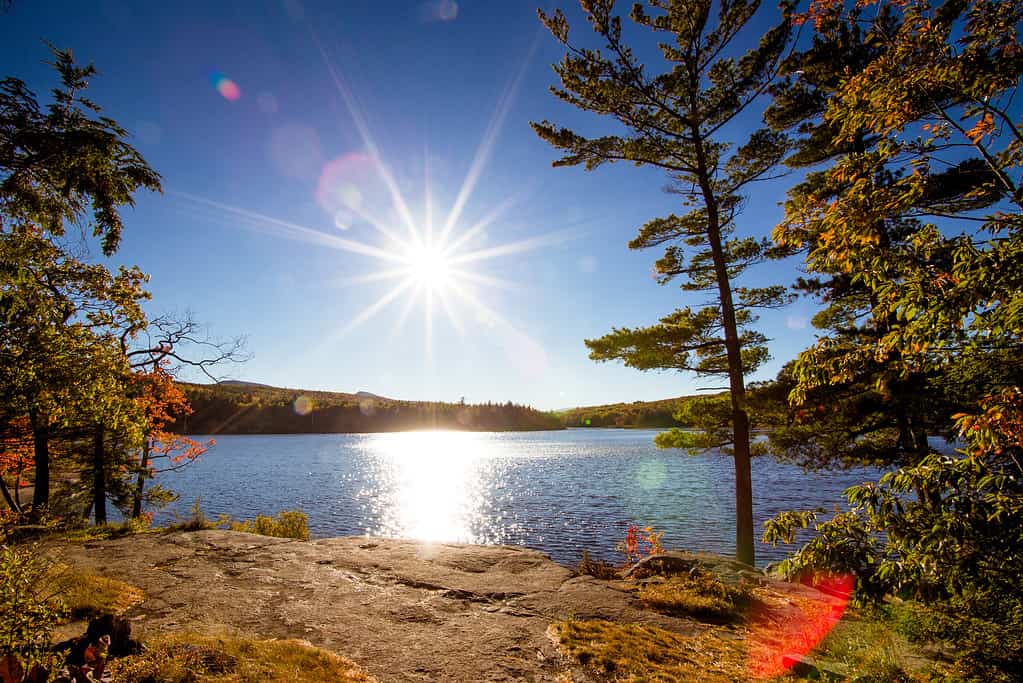
It’s hard to beat camping views when your tent is pitched next to a lake!
©mervas/Shutterstock.com
With 13 sites equipped with electricity hookups, West End Tent and Trailer Campground is a relatively peaceful campground that overlooks the lake from a hill on the north bank. It is a well-liked spot for everyone fishing at the lake because it is near the boat ramps along the lake.
If you are considering bringing pets with you during your stay, which is permitted, keep in mind that the majority of the campsites in this campground offer at least a partial view of the lake and the area is home to wildlife like deer.
Hiking
If you enjoy wandering around remote, vast landscapes, the whole area is a hiker’s paradise. Trekking the many Missouri River trails is great in itself, but Fort Peck Lake’s shoreline provides any trip a sense of space and openness that is just breathtaking.
Three miles of paved nature pathways, part of the Beaver Creek Nature Trail, weave through and around the neighborhood campground. The trailhead is at the campground downriver from the dam, and it travels through areas with wildlife habitat near the Missouri River and the nearby woodland region.
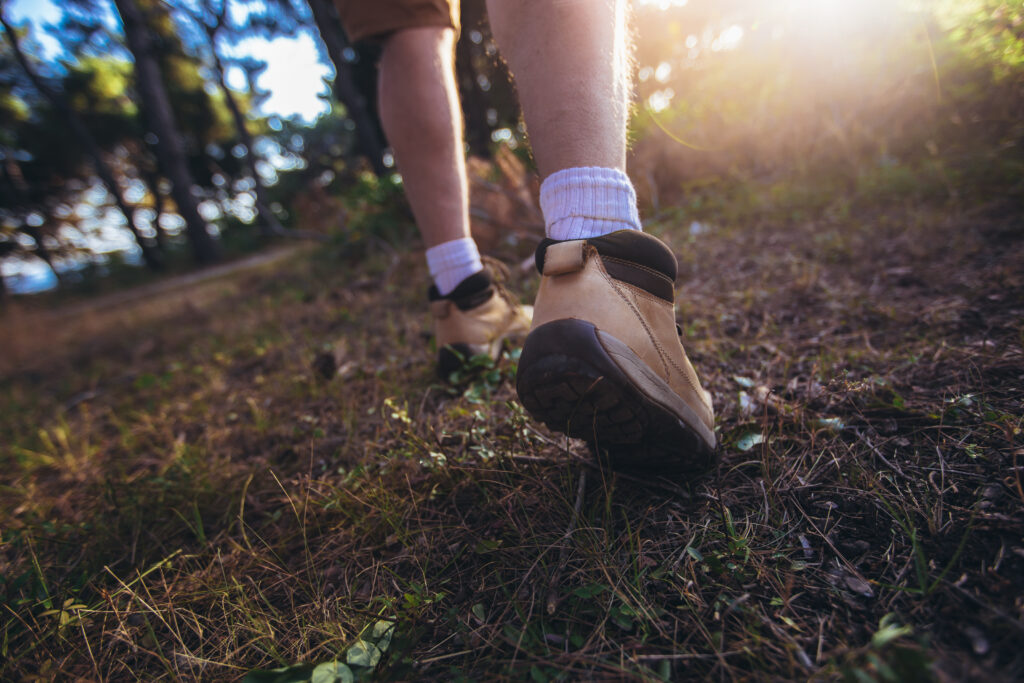
Hiking is a great way to move your body and explore the great outdoors!
©adriaticfoto/Shutterstock.com
The greatest times to use this easy-to-hike trail are in the summer, fall, and spring. It is also a well-known spot for birding and wildlife observation. A hardly used out-and-back track, the Hell Creek Arm of Fort Peck Lake, is slightly over half a mile long. The stroll, which is simple enough for people of all abilities, passes by the lake.
Where is Fort Peck Lake Located on a Map?
Fort Peck Lake is a major reservoir in Montana. The lake is located in the eastern region of Montana about 140 miles East of Great Falls. It is also 120 miles North of the town of Billings.
Here is Fort Peck Lake on a map:
The photo featured at the top of this post is © iStock.com/Jon Farmer
Thank you for reading! Have some feedback for us? Contact the AZ Animals editorial team.






